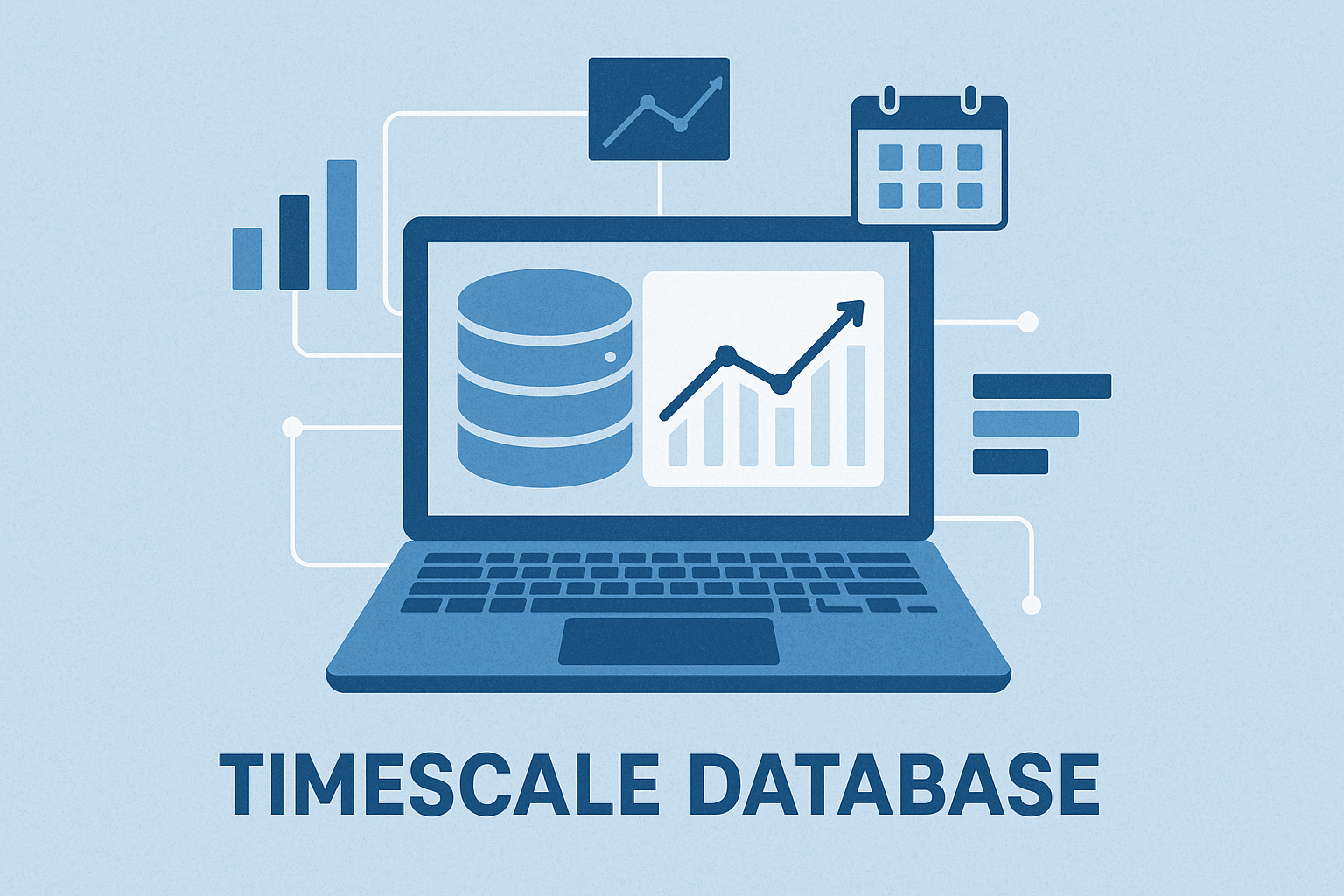What is TimescaleDB? A Beginner's Guide to Time-Series Data
by Puneeth kumar, System Analyst
Introduction
In today's world, data is being generated at an incredible rate. Whether it's stock prices, website traffic, IoT sensor readings, or system logs, a lot of this data is time-stamped. This type of data is called time-series data, and managing it efficiently requires a specialized database. That's where TimescaleDB comes in!

In this blog, we'll break it down in simple terms and explore why it's needed and how it works.
Why Not Just Use a Regular Database?
You might wonder why we need a special database for time-series data. Can't we just use PostgreSQL?
1. Why Not PostgreSQL?
PostgreSQL is a powerful relational database, but it struggles when dealing with massive amounts of time-series data because:
-
Slow queries: As time-series data grows into millions or billions of rows, queries become much slower. Indexes get bloated, and table scans take longer.
-
Insert bottlenecks: PostgreSQL is not optimized for continuously inserting large amounts of data at high speed. It can lead to contention issues, slowing down the entire system.
-
Manual partitioning required: PostgreSQL does not automatically organize time-series data efficiently. We would need to manually partition tables, which is complex to manage.
-
Storage inefficiencies: PostgreSQL stores each row separately, which increases storage costs over time.
2. What About NoSQL Databases?
While NoSQL databases are designed to handle large volumes of data and allow high-speed inserts, they come with their own limitations:
-
No SQL support: Unlike PostgreSQL, NoSQL databases do not support powerful SQL queries for analytics and reporting. Running aggregations, filtering, and joins can be complex.
-
Weak consistency guarantees: Many NoSQL databases do not fully support ACID transactions, making them less reliable for financial or business-critical applications.
-
Difficult to manage structured data: NoSQL is good for unstructured data, but time-series data often requires structured relationships, which NoSQL databases handle poorly.
What is TimescaleDB?
TimescaleDB is an extension for PostgreSQL that makes handling time-series data faster and more efficient. Since it is built on PostgreSQL, we can use the same SQL queries we already know but gain additional benefits like automatic data partitioning, better compression, and faster queries for time-series data.
Unlike traditional relational databases, TimescaleDB is optimized to handle large amounts of time-stamped data efficiently. It organizes data into hypertables, which automatically partition (divide) data into smaller chunks to improve query speed.
Understanding Hypertables
A Hypertable is TimescaleDB's core abstraction for managing time-series data. It behaves like a normal SQL table but is automatically partitioned into multiple chunks based on time (and optionally space).
Benefits of hypertables include:
- Fast insert and query performance.
- Efficient use of disk space with native compression.
- Transparent partitioning—you interact with it like a regular table.
Under the hood, a hypertable is composed of many child tables, but this is abstracted away from the developer, making it simple to work with while maintaining high performance.
Why Use TimescaleDB?
1. Scalability
-
Handles millions or even billions of time-series records efficiently.
-
Uses hypertables to automatically partition data for better performance.
2. High Performance
-
Optimized for time-based queries like "last 7 days," "last month," or trends over time.
-
Supports fast aggregations and downsampling for analytics.
-
Can ingest millions of data points per second without slowing down.
3. PostgreSQL Compatibility
-
Uses standard SQL, so no need to learn a new language.
-
Works seamlessly with PostgreSQL tools, extensions, and ecosystems.
-
Supports triggers, indexes, and foreign keys, making it more powerful than NoSQL alternatives.
4. Data Retention & Storage Management
-
Automatic data retention policies allow old data to be deleted or archived.
-
Helps manage large datasets efficiently without manual intervention.
-
Supports continuous aggregation, so older data can be stored in summarized form.
5. Compression
-
Efficient data compression reduces storage costs.
-
Keeps historical data accessible without slowing down queries.
6. Advanced Analytics & Integrations
- Provides built-in time-series functions like moving averages and gap filling.
How to Install TimescaleDB?
Step 1: Install TimescaleDB Extension
If you already have PostgreSQL installed, you can install the TimescaleDB extension using the package manager:
For Ubuntu/Debian:
sudo apt install timescaledb-toolsFor Mac (Homebrew):
brew install timescaledbStep 2: Enable TimescaleDB in PostgreSQL
After installation, you need to enable the TimescaleDB extension in your PostgreSQL database:
CREATE EXTENSION IF NOT EXISTS timescaledb;How to Use TimescaleDB? (Example)
Step 1: Create a Table for Time-Series Data
Let's create a table to store IoT sensor data:
CREATE TABLE sensor_data (
time TIMESTAMPTZ NOT NULL,
device_id INT,
temperature DOUBLE PRECISION,
humidity DOUBLE PRECISION
);Step 2: Convert the Table into a Hypertable
To take advantage of TimescaleDB's automatic partitioning, convert the table into a hypertable:
SELECT create_hypertable('sensor_data', 'time');Step 3: Insert Time-Series Data
Now, let's insert some sample data into the table:
INSERT INTO sensor_data (time, device_id, temperature, humidity)
VALUES
('2025-05-25 12:00:00', 1, 23.5, 60.2),
('2025-05-25 12:05:00', 1, 24.0, 58.9),
('2025-05-25 12:10:00', 2, 22.8, 61.5);Step 4: Query Time-Series Data Efficiently
Now, let's run some time-based queries:
Get the average temperature for the last 24 hours:
SELECT time_bucket('1 hour', time) AS bucket,
AVG(temperature) AS avg_temp
FROM sensor_data
WHERE time > now() - interval '1 day'
GROUP BY bucket
ORDER BY bucket;Find the latest reading from each device:
SELECT DISTINCT ON (device_id) device_id, time, temperature, humidity
FROM sensor_data
ORDER BY device_id, time DESC;Conclusion
TimescaleDB combines the power of PostgreSQL with the efficiency of a time-series database, making it an excellent choice for handling large-scale time-series data. Whether you're dealing with financial data, IoT sensors, or system logs, TimescaleDB provides fast, scalable, and easy-to-use solutions.